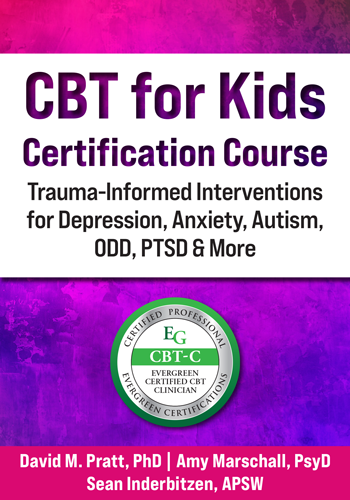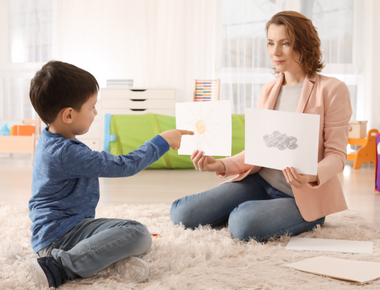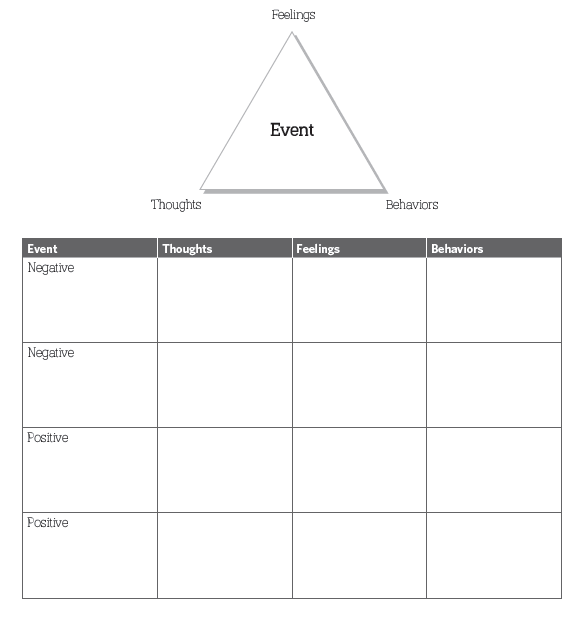CBT Activities for Kids Overcoming Adverse Experiences
FREE CBT worksheets to empower kids into resilience and growth.
PESI Team

When emotions get in the way of a child’s daily life and disrupt their routine, CBT is an effective and developmentally appropriate treatment for a wide range of issues. But creating lasting change in therapy is hard work - especially when your client, who by nature is easily distracted, disengaged, or lacks the necessary development to retain therapeutic interventions.
Traditional therapy relies heavily on language, but when working with kids, you've got to do more than just talk to find a solution – especially if your young clients have difficulties reflecting on their emotions and changing their own negative thinking. A great activity to help them develop their own inner voices and better process both positive and negative feelings is the Cognitive Behavioral Triangle.
In this exercise, your young client will identify two positive events and two negative events to complete the spaces in the worksheet. Then, they will discuss with you their thoughts about it, feelings related to it, and how these both may affect their behavior. Every child’s response to these activities will differ; sometimes a person’s response differs from what you think it should be.
This activity will give your young clients room to move from being overwhelmed by an event to having an event empower them into resilience and growth by bringing awareness of how thoughts, feelings and behaviors are connected.
Get more printable CBT worksheets you can use to support the children you see in your practice in our FREE CBT worksheets bundle. Designed specifically to use with children and adolescents, this downloadable resource will help them work through emotions, thoughts, and feelings, while learning how to set goals.
Get the complete collection of over 200 cognitive behavioral therapy worksheets and exercises adapted just for children and adolescents when you register for the CBT for Kids Certification Course.
Traditional therapy relies heavily on language, but when working with kids, you've got to do more than just talk to find a solution – especially if your young clients have difficulties reflecting on their emotions and changing their own negative thinking. A great activity to help them develop their own inner voices and better process both positive and negative feelings is the Cognitive Behavioral Triangle.
In this exercise, your young client will identify two positive events and two negative events to complete the spaces in the worksheet. Then, they will discuss with you their thoughts about it, feelings related to it, and how these both may affect their behavior. Every child’s response to these activities will differ; sometimes a person’s response differs from what you think it should be.
This activity will give your young clients room to move from being overwhelmed by an event to having an event empower them into resilience and growth by bringing awareness of how thoughts, feelings and behaviors are connected.
Get more printable CBT worksheets you can use to support the children you see in your practice in our FREE CBT worksheets bundle. Designed specifically to use with children and adolescents, this downloadable resource will help them work through emotions, thoughts, and feelings, while learning how to set goals.
Get the complete collection of over 200 cognitive behavioral therapy worksheets and exercises adapted just for children and adolescents when you register for the CBT for Kids Certification Course.
CBT Toolbox for Children and Adolescents

The CBT Toolbox for Children and Adolescents gives you the resources to help the children in your life handle their daily obstacles with ease. Written by clinicians and teachers with decades of experience working with kids, these unique and effective therapy tools are vital to teaching youth how to cope with and overcome their day-to-day struggles.
Step-by-step, you'll see how the best strategies from cognitive behavioral therapy are adapted for children to treat trauma, ADHD, autism, anxiety, depression, and conduct disorders.
Step-by-step, you'll see how the best strategies from cognitive behavioral therapy are adapted for children to treat trauma, ADHD, autism, anxiety, depression, and conduct disorders.
Want more tools and strategies?

This comprehensive Cognitive Behavior Therapy training will empower young clients and accelerate your career.
Discover activities-based, trauma-informed CBT solutions for treating anxiety, PTSD, depression, OCD, substance abuse, insomnia, and more in kids and teens. Includes up to 33.0 CE hours, printable CBT worksheets, one-on-one consultations, and FREE certification.
Discover activities-based, trauma-informed CBT solutions for treating anxiety, PTSD, depression, OCD, substance abuse, insomnia, and more in kids and teens. Includes up to 33.0 CE hours, printable CBT worksheets, one-on-one consultations, and FREE certification.






